St. Augustine is a warm-season, low-maintenance grass that is especially popular in the coastal regions due to its exceptional salt and heat tolerance. In this article, you’ll learn how to revive St Augustine grass to grow back.c
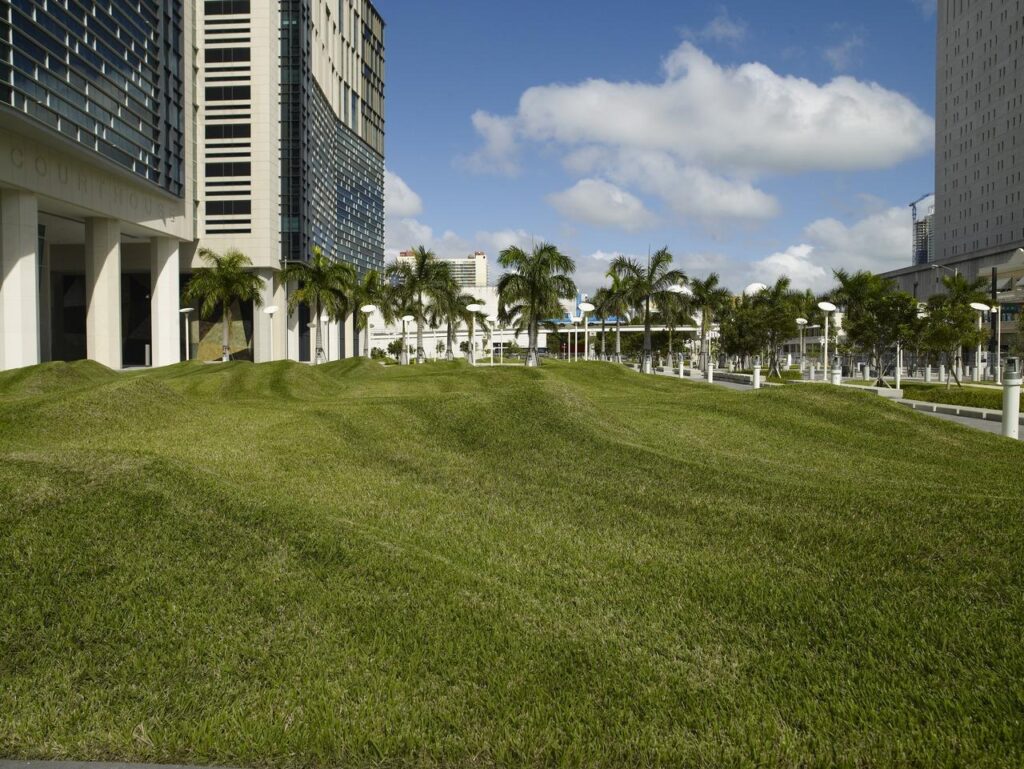
Photo Credit Thanks to its tolerance for heat and humidity, St. Augustine grass lawn is very popular in Florida and Gulf states.
It can be easily distinguished from other turf grasses because of its bluish-green grass blades and a low, creeping growth habit that allows it to make dense mats. Its density, resilience, and vivid green foliage make it ideal for lawns, pastures, and other turf areas.
Not only does the St. Augustine grass is able to tolerate the scorching heat of the summer, but its shade tolerance is also exceptional.
But unfortunately, many of us do not give much thought or proper care to our lawns unless it starts causing problems. There are many instances when we all look at our yards and think, “something is wrong with my lawn.”
As a lawn owner, you will face many challenges regarding lawn health. It could be poor soil quality such as heavily compacted clay soil, lawn pests such as chinch bugs, or lawn diseases such as gray leaf spot and brown patch disease.
In addition to that, too much fertilizer, drought stress, and pest infestation are some other factors that could result in patchy turf or a dead St. Augustine lawn.
Keeping your St. Augustine grass lush, promoting healthy growth, and saving your lawn from turf diseases is as simple as following a professional lawn care plan.
So, let’s go ahead and learn about the different reasons behind bare spots and patches of brown grass on a St. Augustine turf in some detail.
Why Is My Augustine Grass Dying?
St. Augustine is a warm-season grass species. Generally, St. Augustine grass thrives in temperate climates and temperatures of 75 to 90 degrees Fahrenheit.
So, if you live in an area with cold temperatures, you will never be able to create and maintain a healthy lawn, no matter what you do. In addition to that, soil quality is also of critical importance for the grass to grow properly.
So, if despite all the lawn care that you can provide, your Augustine grass refuses to grow properly, we highly recommend taking a soil test. In many cases, a soil test can help you revive dead St. Augustine grass by pinpointing the issue.
Nonetheless, here are a few common reasons that might cause the death of Augustine grass:
Poor Soil Quality

Photo Credit Soil compaction is a significant problem behind dying grass in a St. Augustine lawn.
Even though St. Augustine grass is able to grow in a number of soil types, it still needs proper soil aeration, fertilization, and moisture.
For instance, if there is thin topsoil or concrete, rocks, and gravel mixed in it, it will prevent the grass and its root system from properly growing. A healthy soil also contains a balanced mix of salts, nutrients, and organic matter.
Improving soil quality can help you revive St. Augustine grass. For instance, you can try adding nutritious topsoil to your yard, which will help you resolve the poor soil issue.
Also, soil pH can also impact the growth of St. Augustine grass as well. For the St. Augustine grass to grow to its fullest, soil pH should be maintained between 6 to 6.5.
So, if you have alkaline soil, you can add sulfur to it or regularly use mulch or organic compost on your lawn. It will bring down the soil pH to desired levels. Moreover, if your lawn consists of clay soil. In that case, many more soil compaction issues will need to be resolved if you want to revive St. Augustine grass.
Lawn Diseases
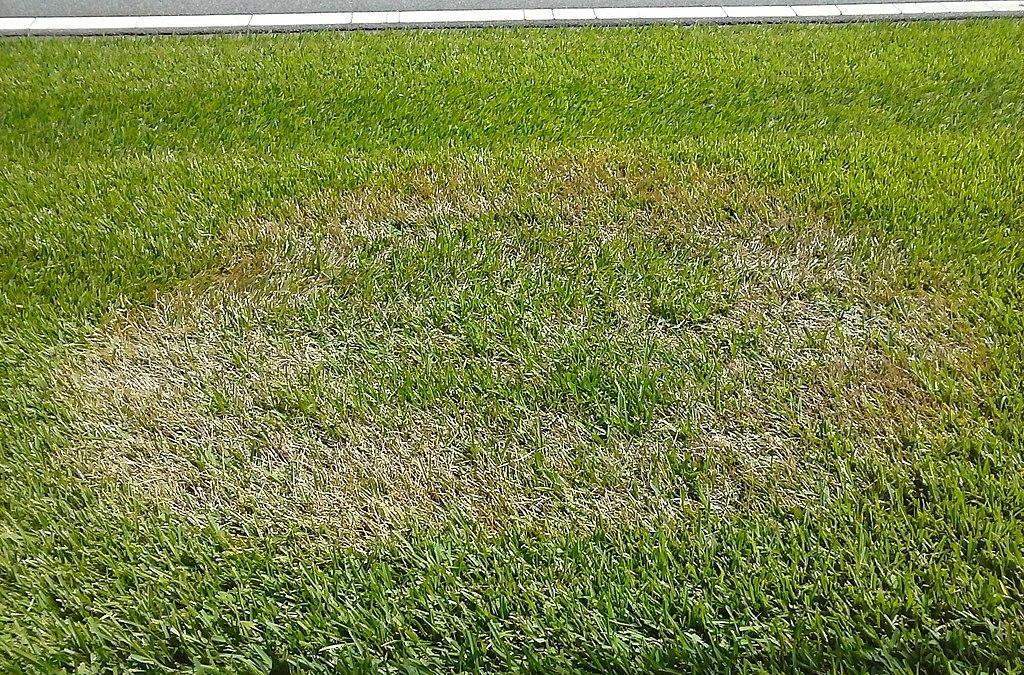
Photo Credit Brown patch disease: A fungal infection that causes the grass to turn brown.
Sometimes, it is not the lack of proper lawn care but lawn diseases that can result in dying or dead St. Augustine grass.
Fungal diseases such as take-all root rot, brown patch disease, and gray leaf spot can cause the St. Augustine lawn to turn brown and develop brown patches. If not controlled in time, fungal infections could spread to the entire yard, resulting in dead patches all over the lawn.
Brown patch disease is a common problem for Augustine turfs during spring and fall when the weather is warm and humidity is high. It is characterized by brown spots or brown patches and makes the grass look like it is under drought stress.
Brown patch diseases ruin the aesthetics of your lawn and can also make your St. Augustine grass prone to lawn bugs.
A lawn care company could quickly help you decide the right course of fungicide treatment for reviving your St. Augustine grass.
However, a fungicide treatment is only helpful if the fungal infection is caught in time. So, if you see any brown spots or brown patches on your lawn, do not wait, or the entire lawn will turn brown, with no way back except reseeding.
RELATED: Why Is My St. Augustine Grass Turning Yellow | Possible Causes & Easy Fixes
Over Fertilization
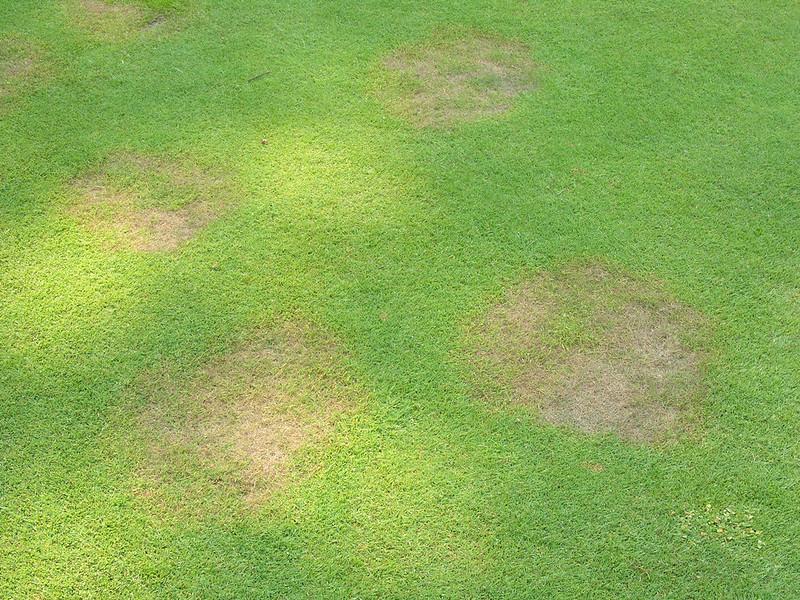
Photo Credit Fertilizer burn due to excessive fertilizer use can also cause yellow or brown spots on the lawn.
Just as under fertilization, overfertilization can also slow grass growth and result in dead grass.
For instance, excessive fertilizer use can increase the concentration of certain nutrients and salts in the soil, ruining the soil chemistry. Excess fertilizer can also cause a fertilizer burn, resulting in dying or dead St. Augustine grass.
Fertilization timing is also of critical importance if you want to revive St. Augustine grass. Using a nitrogen fertilizer in early spring or late fall can even kill the St. Augustine grass.
We also strongly suggest using a slow-release nitrogen fertilizer on your lawn. Too much nitrogen at once in the soil promotes fungal and weed growth.
Lawn Pests
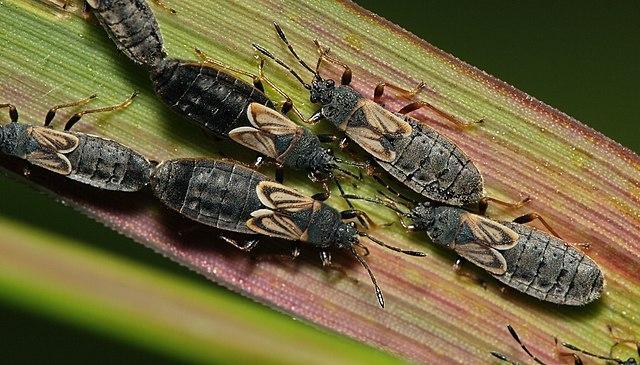
Photo Credit Chinch bugs inject a toxin that prevents water and nutrient movement in the grass.
Pest control is an integral part of lawn care and maintenance. Even though St. Augustine grass is considered quite pest-resistant, the grass species is very prone to the infestation of chinch bugs.
In addition to that, grub worm infestation can also be very devastating for the St. Augustine grass. The brown patches formed due to a bug infestation never green up unless you adapt proper pest control practices.
The presence of excess organic matter, infrequent mowing, and thatch build-up are a few common causes of a pest infestation in St. Augustine grass. Grubs feed on the roots of the grass, causing St. Augustine grass to die. The symptoms of grub damage are somewhat similar to drought stress. If not treated in time, you will soon have dead St. Augustine grass.
Lawn Weeds
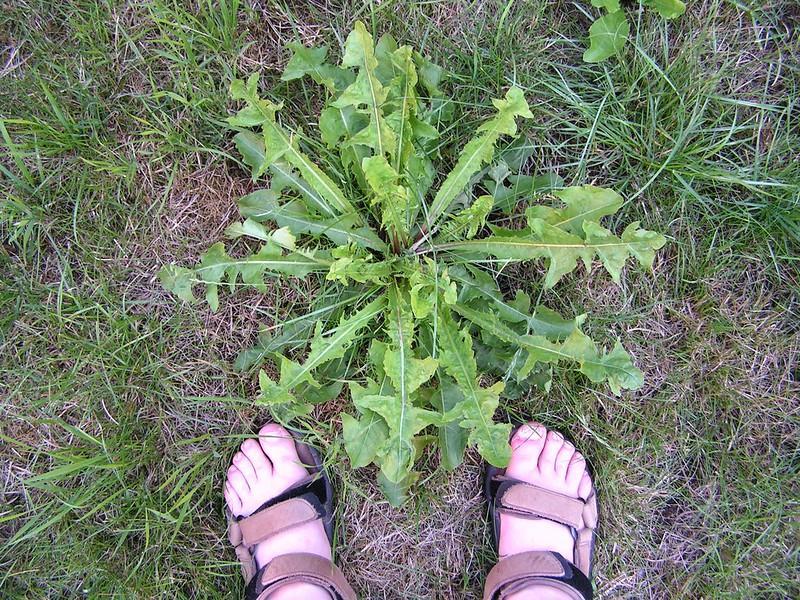
Photo Credit Some weeds release chemicals that can suppress or even kill neighboring grass.
Even though weeds directly do not contribute to the formation of brown spots or patches of dead grass, they can still compromise the health of your St. Augustine grass.
For instance, weeds compete with the grass for space, water, and nutrients. This could result in stunted grass growth, slowing you down if you want to revive St. Augustine grass.
In addition to that, some weeds release chemicals in their surroundings that can suppress the growth of nearby plants.
All in all, having weeds in your lawn could decrease its resilience, making your lawn more prone to fungal and other lawn diseases. In the long run, it could result in the accumulation of patches of dead grass on your lawn.
Frost Damage
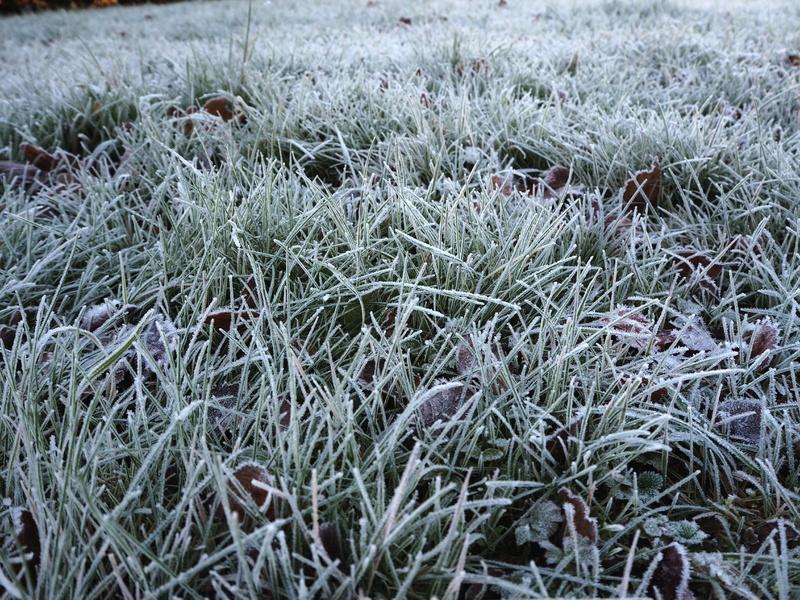
Photo Credit Frost causes the plant cells to rupture, which results in dead grass.
St. Augustine grass quickly turns brown and becomes patchy if the weather gets too cold. In most cases, if the damage is not too extensive, you can revive St. Augustine grass with ease.
However, if the damage is extensive, you might need to reseed your entire lawn to fill the bare spots. Frost freezes the grass, and it becomes rigid. If you walk on frozen grass, the plant cells rupture, resulting in the death of grass.
Another way frost or cold can damage or kill the grass is that the water expands when it is frozen. As a result, the plant cells rupture, resulting in dead St. Augustine grass. A lawn that died due to winter kill can revive, but if the grass stays frozen for long periods, it will be impossible for the grass to grow back to its previous glory.
RELATED: St. Augustine Grass 101: Is It Any Good? And, How To Grow It In Your Yard?
Dormancy & Drought Stress
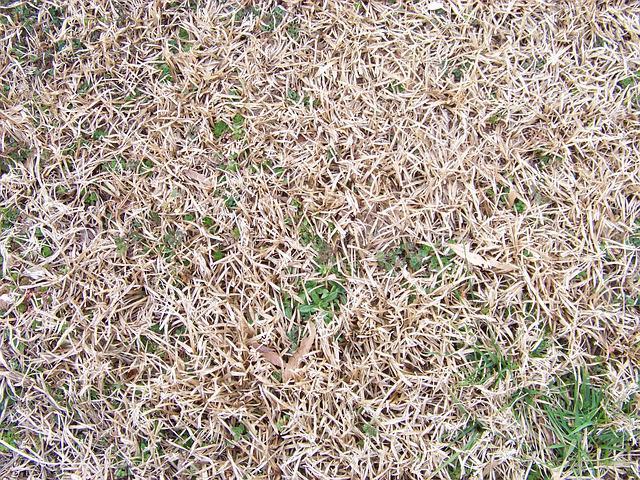
Photo Credit Like winters, drought stress can also make your St. Augustine grass dormant.
As already stated. St. Augustine is a warm-season grass. It grows best during hot weather and goes dormant if the temperature dips below 12 degrees Celsius or 55 degrees Fahrenheit.
During the dormancy, leaf blades turn brown, and the grass stops growing, making it look pale, brown, and sort of dead. In the case of winter dormancy, the grass will get back to normal once the warm season returns.
However, the grass might also enter dormancy during the summer if you do not maintain a regular watering schedule.
Water is necessary for grass growth and healthy turf maintenance. If drought stress occurs, St. Augustine grass can start thinning out, resulting in the grass turning brown. Drought-stress-induced dormancy can also cause the formation of bare spots and patches of dead grass on the lawn surface.
How to Revive St. Augustine Grass?
If the St. Augustine grass is truly dead, it is not reviving. To get your lawn back up and running, you will have to plant new grass seeds or use fresh St. Augustine grass plugs or sod.
However, it is possible to bring your grass back to life if it merely looks dead to the eye and there are still living grass plants underneath the brown patches. Here’s how you can revive your St. Augustine grass and get it to grow back:
Deep and Infrequent Watering
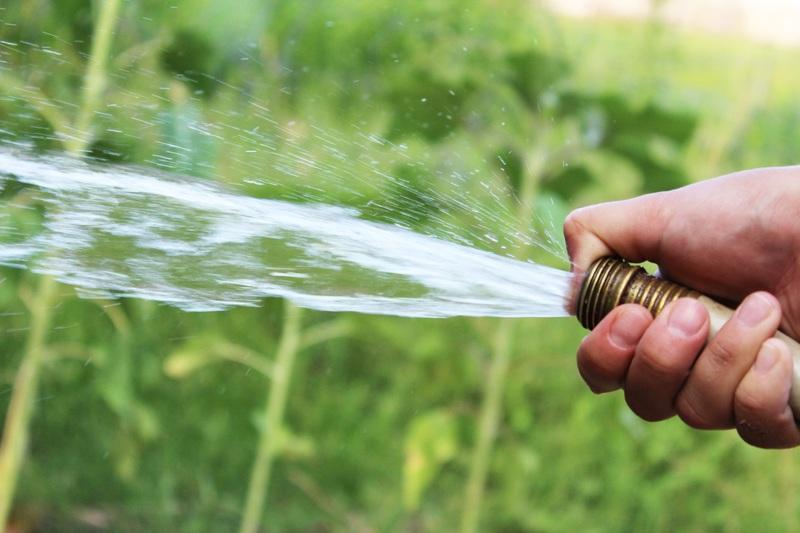
Photo Credit Watering lawns deeply increases drought resistance.
As already stated, prolonged drought can cause the grass to thin, die, and appear patchy. So, you will need to water the grass adequately to maintain healthy grass growth.
While watering grass, we suggest you do it infrequently and deeply. It will promote robust root growth, which will increase the drought resistance. Another thing to keep in mind is that overwatering can be as harmful to the grass as underwatering.
It can promote fungal growth and compaction issues on your lawn. St. Augustine grass only needs to be watered ¾ to 1 inch.
The watering amount can be increased to up to two inches in the growing season. Also, we suggest that you water the grass early in the morning, so any excess water on the lawn surface gets evaporated.
Improve Soil Quality
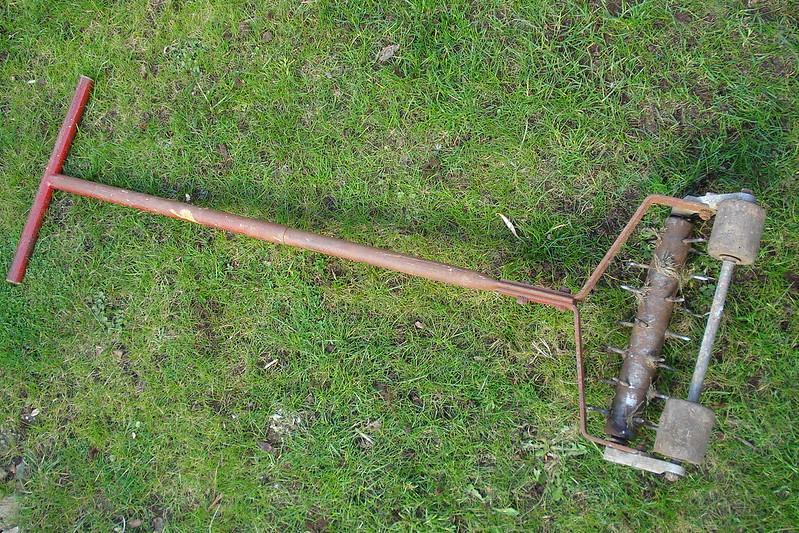
Photo Credit Aerate your lawn to fix compaction and patchy lawn issues.
If the lawn soil is compacted or its pH is too acidic or too alkaline, it will hinder normal grass growth and development. You can easily fix the compaction issues in your lawn by core aerating the soil. Core aeration will also help the air and water reach deeper into the ground, promoting healthy root and grass growth.
Soil pH can also be adjusted very easily by using commercially available materials. For instance, if the soil is too acidic, you can add lime to it. If it is too alkaline, you can change that with simple organic treatments such as using compost and organic mulch regularly.
Fertilize The Lawn Adequately
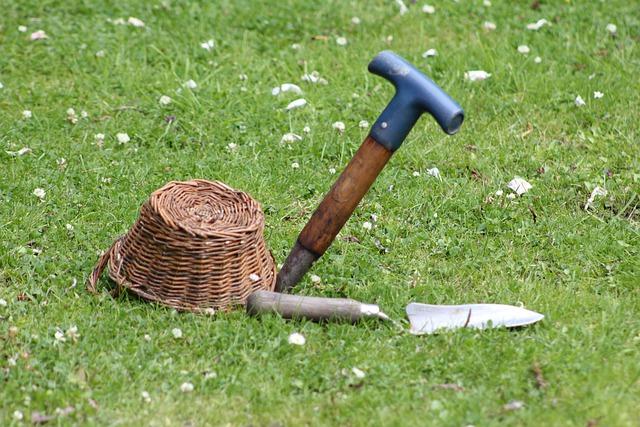
Photo Credit Sometimes you can revive the grass by simply adding adequate fertilizer to the soil.
Sometimes the reason behind a dead-looking lawn is under or overfertilization. They are both harmful to the soil and the grass.
If the grass does not get enough nutrients, it will never reach its full potential. On the other hand, adding too many salts or nutrients can ruin soil chemistry and make water and nutrient uptake difficult for the grass.
So, we highly suggest that you get a soil test and then fertilize your lawn accordingly. Also, make sure that you water your lawn deeply after adding fertilizer which will increase nutrient uptake and promote grass growth.
Ensure Pest and Weed Control
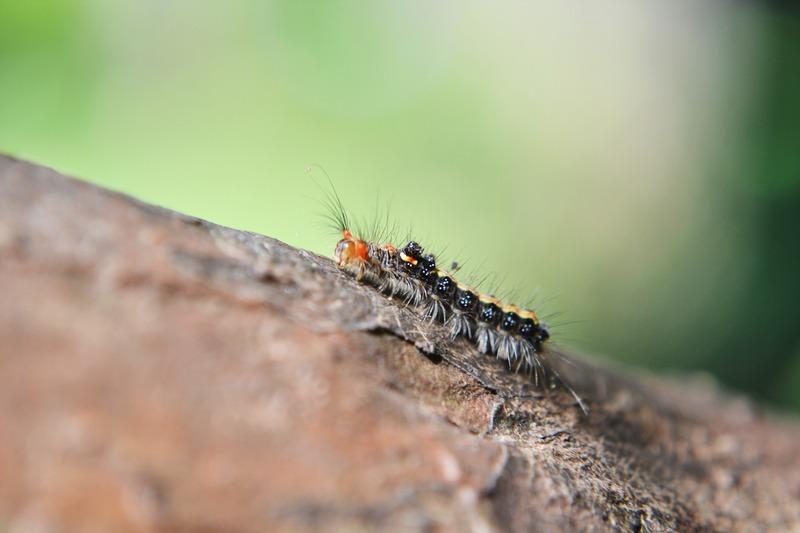
Photo Credit Ensure a weed and pest-free lawn so that the grass revives quickly and better.
If there are too many weeds on your lawn, they can choke out the grass making your lawn look dull and dead. Similarly, a pest infestation can cause the death of grass plants.
So, using an appropriate pest and weed killer is sometimes necessary to maintain the health of your lawn. Also, unless you rectify the weed and pest problem, you will not be able to revive your lawn back to life.
Resod The Lawn
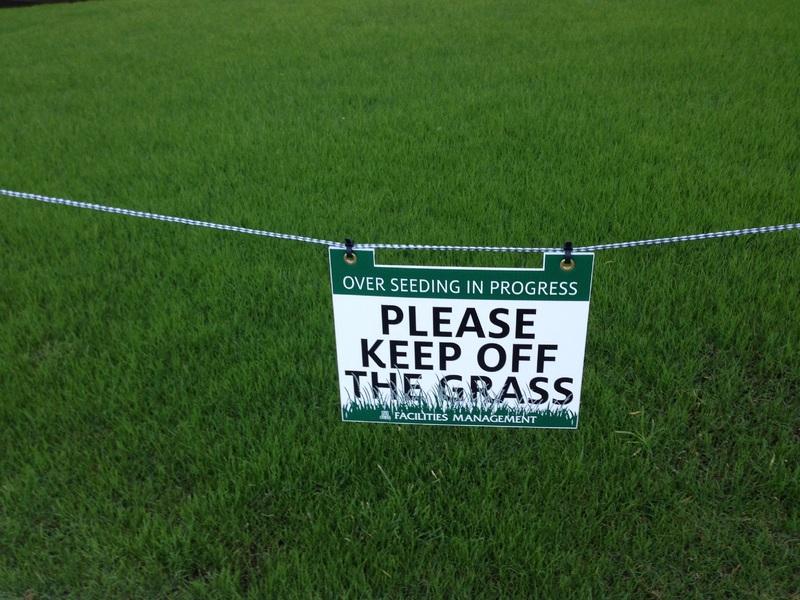
Photo Credit Spring and early summer is the best time to overseed St. Augustine grass.
The quickest and most efficient way of getting your lawn back to life after eliminating all the issues is to reseed or resod the lawn.
The best season to plant St. Augustine grass is spring or early summer. Overseeding can help you make your lawn look lush and green once again. It will also fix any bare spots on the lawn. If there are only a few bare spots on the lawn, you should use grass sod rather than seeds.
RELATED: How to Manage St. Augustine Grass Runners: A Comprehensive Guide
Frequently Asked Questions (FAQs)
How do I make my St. Augustine grass thicker and greener?
The first thing you need to do is figure out the exact reason causing your lawn to appear pale, brown, and thin. Once you have done that, you can move on towards fixing the problem.
Generally, ensure that your grass receives enough nutrients, water, and lawn care to maintain and support healthy growth.
What fertilizer is best for St. Augustine grass?
To determine the best fertilizer for your lawn, you will need a soil test. A soil test contains a ton of information about soil chemistry and composition. It will tell you exactly which nutrients you need to add to your soil. As a general rule, use a slow-release nitrogen fertilizer with trace amounts of phosphorus and sulfur.
What is the best height to cut St. Augustine grass?
St. Augustine lawn should be mowed at around two to three inches. As a general rule, make sure that you do not cut more than one-third of the leaf blades with any single cutting. Also, we suggest that you mow your lawn low and frequently. It makes your lawn clean, green, and serene.
Sources for Further Reading
- St. Augustine Grass – Gardening Solutions – University of Florida, Institute of Food and Agricultural Sciences. (2022). Retrieved 1 May 2022, from https://gardeningsolutions.ifas.ufl.edu/lawns/turf-types/st-augustinegrass.html
- Maintaining St. Augustine grass Lawns – Treatment according to the season. Texas A&M AgriLife Extension. (2022). Retrieved 1 May 2022, from https://agrilifeextension.tamu.edu/library/landscaping/maintaining-st-augustinegrass-lawns/
- St. Augustinegrass Yearly Maintenance Program. Clemson University Cooperative Extension Service. (2022). Retrieved 1 May 2022, from https://hgic.clemson.edu/factsheet/st-augustinegrass-maintenance-calendar/
Editor’s Recommendations
Now that you know how to revive St Augustine grass to grow back, make sure to read our other articles:
Is Sand Good For Lawns? (and What Type of Sand for Lawns Is Best)







